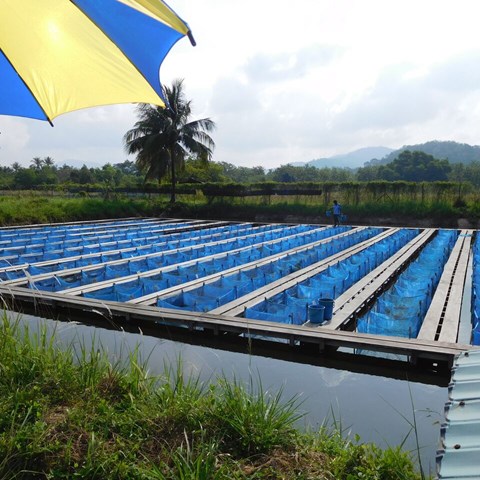In livestock and aquaculture, there has been a long-standing desire to reduce variability by means of genetic selection. The variability of trait values of a genotype, measured either repeatedly on the same individual, or on multiple individuals belonging to the same family, has been studied as a quantitative trait in its own right. This trait is often referred to as “inherited variability” or “heritable variation in environmental variance”. Animal breeders have successfully improved mean levels of trait values, but have struggled to understand, let alone reduce, the variability of trait values among individuals. A primary obstacle has been the difficulty to estimate heritabilities and breeding values for variability. In domestic Nile tilapia, for example, size differences among individuals are very large but the genetic background of this variability is unknown.
In the traditional quantitative genetic model, the phenotype of an individual is determined by the direct effect of its own genes and an environmental effect. With social interactions, however, the phenotype of an individual may also be affected by genes of its social partners. Such effects are known as Indirect Genetic Effects (IGE). IGE can contribute substantially to heritable variation underlying the trait, and may even reverse the direction of response to selection. In some species, IGE and inherited variability are related via competition.
The observed relationship between social interactions and variability in aquaculture suggests that genetic improvement of social effects may be a promising route to reduce variability. Similar indications come from the field of plant breeding, where breeders have successfully improved uniformity by reducing competition among individuals, which has substantially increased crop yields. Hence, in plants, a clear genetic relationship exists between competition, variability, and yield, while in aquaculture it is known that there are strong phenotypic relationships. At present, however, the genetic relationship between social interactions and variability among individuals is almost entirely unknown in animals, largely due to inability of the current quantitative genetic models of IGE and inherited variability to model such relationships. The lack of quantitative genetic models that connect IGE to inherited variability limits our understanding of the potential of variability to respond to selection, both in nature and agriculture.
